Dogs
How to howl
A lot of people told her that howling would get her nowhere in life, but now she's a howling instructor. So that shows them!
Posted By: Alex - Wed Aug 07, 2013 -
Comments (9)
Category: Animals, Dogs
The Dog Saucer
Greg Hudome is hoping to raise $600,000 on kickstarter to start production on his "Dog Saucer" invention. So far he's managed to raise $100, so he's got a ways to go.
Posted By: Alex - Mon May 27, 2013 -
Comments (6)
Category: Dogs, Motorcycles
Earthquake-Predicting Dogs
Over in China, researchers decided to test the theory that dogs can predict earthquakes. So they housed four dogs at the Nanchang quake center and waited for them to show signs of "abnormal" activity, such as barking a lot.They soon discovered that dogs (and apparently these dogs in particular) often bark a lot. According to local residents "every night at 11pm they start barking over and over." After fielding multiple complaints from angry neighbors, the researchers "offered to muzzle the dogs, but accepted later that this might impede their skills as quake-prognosticators." Finally, the experiment was shut down.
So maybe dogs can predict earthquakes, or maybe they can't. But until we learn to speak dog language better, it doesn't look like our canine friends will be much use to us as official quake predictors. [London Times]
Posted By: Alex - Fri May 10, 2013 -
Comments (4)
Category: Science, Experiments, Dogs
Doga (Doggy Yoga)
So apparently this is a real thing. That is, there really are people willing to take your money so that you can bring your dog to your yoga class. The Metro provides some history:‘Any time there was a yoga mat around he was there,’ she says. ‘I realised he loved yoga and being around the class so I started adding him into the postures. I would inhale my arms up and he would inhale his arms up – with some help from me. Over the years we have perfected the postures and found moves that suit both our bodies.’ Teitelman started incorporating dogs into her yoga classes and held her first Doga class in New York in 2002.
Posted By: Alex - Mon Apr 29, 2013 -
Comments (2)
Category: Exercise and Fitness, Dogs
My Dog Can Skype
Posted By: Paul - Wed Jan 16, 2013 -
Comments (3)
Category: Communications, Internet, Dogs
Lyndon Johnson Lifts Dogs By Their Ears
Even if Mitt Romney becomes president, his decision to drive 650 miles from Massachusetts to Ontario with his dog in a carrier tied to the roof of the car will remain a black mark against him in the eyes of many people. Wikipedia calls it his "Dog Incident." However, he's not the only person in Presidential history to have suffered from a dog controversy. Back in 1964, Lyndon Johnson caused an uproar when he showed reporters how he could pick up his two beagles, named 'Him' and 'Her,' by their ears. Dog lovers were not amused.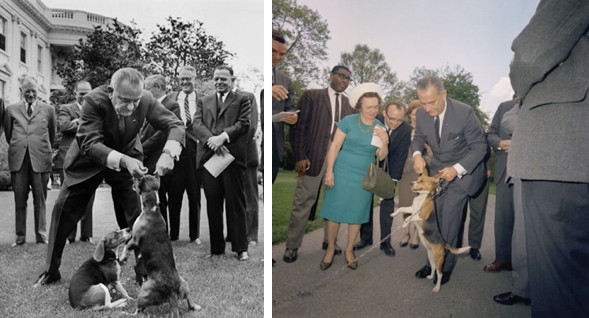
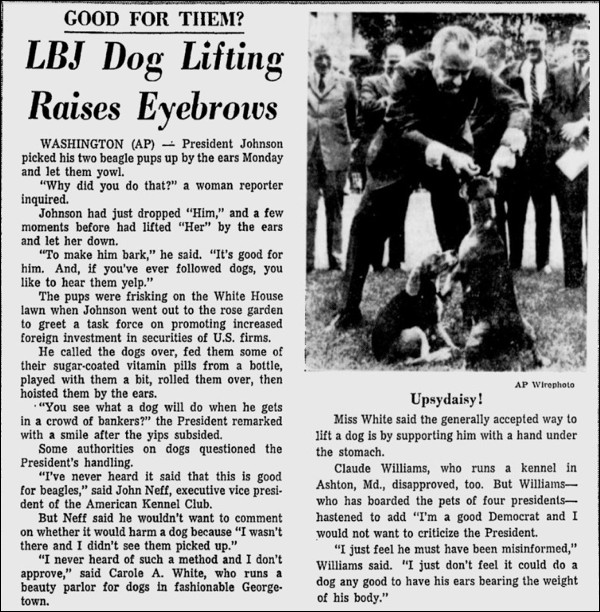
Source: Sarasota Herald-Tribune, Apr 28, 1964
Posted By: Alex - Tue Aug 14, 2012 -
Comments (6)
Category: Animals, Politics, Dogs
It’s Flashbeagle, Charlie Brown
Flashdancing and squaredancing?!? Most swiftly outmoded Charlie Brown special ever!
Posted By: Paul - Wed Jul 18, 2012 -
Comments (3)
Category: Fads, Cartoons, Dogs, 1980s, Dance
Bad Futurism
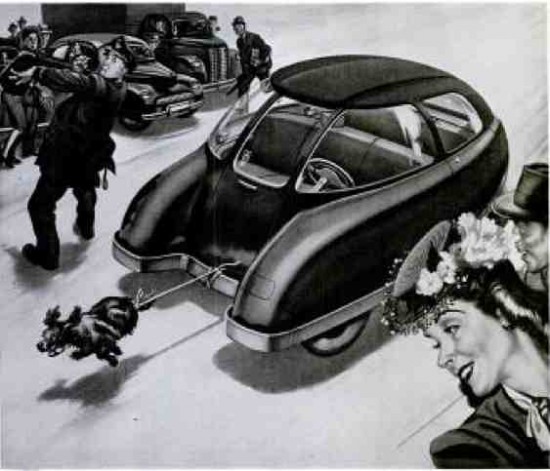
If a car this light could ever be built, how would it cope with even a windy day?
Original ad here.
Posted By: Paul - Tue Jul 03, 2012 -
Comments (4)
Category: Technology, Dogs, 1940s, Cars, Yesterday’s Tomorrows
More Blacky Pictures Test Pix
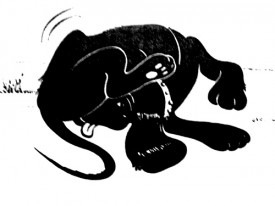
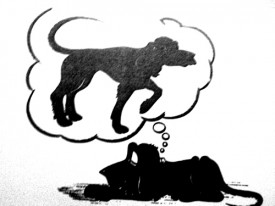

A little more ingenious searching allowed me to find three additional Blacky images.
Posted By: Paul - Fri Jun 08, 2012 -
Comments (5)
Category: Sexuality, Psychology, Children, Dogs, 1950s
The Blacky Pictures Test
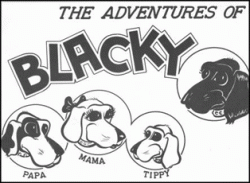
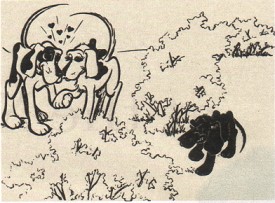
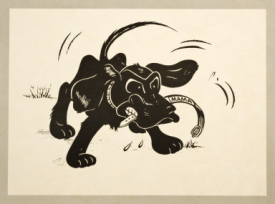
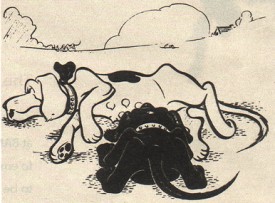
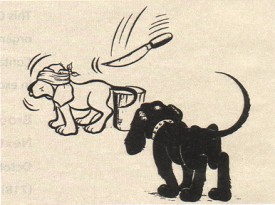
What kind of kids' book is this? A Freudian one, to elicit psychosexual reactions from unsuspecting youngsters. Kids would be asked to interpret these loaded pictures, telling stories that revealed their supposed neuroses. Poor Oedipal Blacky, chewing up "Mama's" collar!
The Blacky Pictures were developed in 1950. They have been described as ‘a technique for the exploration of personality dynamics’ in children. They were developed by G. S. Blum in 1949. Each of the 12 cards making up the test feature a dog named ‘Blacky’. Each cartoon represents a different stage of psychosexual development (the way sexual behaviour develops, according to psychoanalysts). The test also looks at family relationships.
These five images are the only ones I have been able to find on the web, out of the 12 originals.
Posted By: Paul - Fri Jun 08, 2012 -
Comments (8)
Category: Sexuality, Psychology, Children, Dogs, 1950s

| Who We Are |
|---|
| Alex Boese Alex is the creator and curator of the Museum of Hoaxes. He's also the author of various weird, non-fiction, science-themed books such as Elephants on Acid and Psychedelic Apes. Paul Di Filippo Paul has been paid to put weird ideas into fictional form for over thirty years, in his career as a noted science fiction writer. He has recently begun blogging on many curious topics with three fellow writers at The Inferior 4+1. Contact Us |




